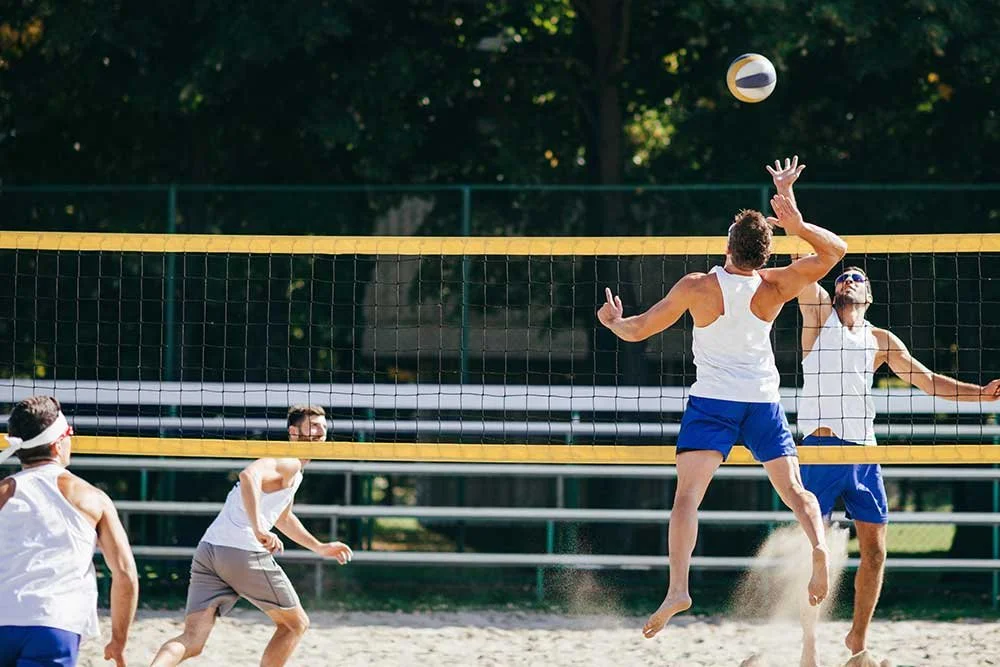ACL Tears in Field Hockey: What Female Athletes Should Know
An ACL tear in field hockey typically occurs during a sudden stop, pivot, or change in direction, exactly the kind of movement field hockey players make on every possession. Most injuries are non-contact, meaning they don’t happen from a collision, but rather from planting the foot and twisting the knee under load.
Pickleball and Knee Pain: Identifying and Preventing Common Injuries on the Court
If you’ve stepped off the court with aching knees, you’re not alone. As a sports doctor for pickleball injuries, I often treat patients with pain related to overuse or improper mechanics. Some of the most frequent pickleball knee injury diagnoses include:
Patellar Tendonitis (Jumper’s Knee): Pain just below the kneecap, often from repeated jumping or forceful squatting.
Meniscus Tears: Caused by twisting motions, especially when the foot is planted but the knee rotates.
Runner’s Knee (Patellofemoral Pain Syndrome): General pain around the kneecap from repeated impact or misalignment.
Bursitis: Inflammation in the knee's cushioning sacs, usually from kneeling or direct pressure.
Whether you’re a seasoned player or just learning the ropes, it’s important to recognize the signs of a pickleball knee injury before it sidelines your summer fun.
Patellar Tendonitis vs. Jumper’s Knee: What’s Causing Your Summer Knee Pain?
Jumper’s knee is a form of overuse injury that affects the patellar tendon the thick cord of tissue that connects your kneecap (patella) to your shinbone (tibia). This tendon plays a key role in knee extension, allowing you to straighten your leg and absorb force during jumping and landing.
When repetitive impact overloads the tendon, it can lead to microtears, inflammation, and chronic pain. This condition is especially common in high-impact sports like volleyball, basketball, running, and more recently pickleball.
Preventing Shoulder Injuries in Youth Baseball and Softball
As a board-certified orthopedic surgeon and sports medicine specialist in the active mountain town of Vail, and Frisco, Colorado, I see a noticeable uptick in shoulder injuries every summer—especially among young baseball and softball athletes. While throwing is an essential part of the game, repetitive motion and poor mechanics can set the stage for serious injury.
If your child is playing in a summer league or attending a baseball or softball camp, now is the time to take shoulder injury prevention seriously.
ACL Tears in Kids: What Parents Should Know About Treatment and Recovery
Knee injuries might seem like something that only affects adults—but in today’s world of youth athletics, ACL tears are showing up more and more in kids. As an ACL Doctor in Vail, Colorado, I’ve seen a noticeable rise in pediatric ACL injuries over the past decade.
The stakes are different for growing athletes. A torn ACL doesn’t just disrupt a season—it can affect growth, development, and long-term knee health if not handled properly. The good news? With the right treatment strategy, young athletes can heal, return to sport, and continue to thrive.
Summer Sports & ACL Tears: What You Need to Know Before You Hit the Field
There’s a lot to love about summer—longer days, warmer weather, and the return of outdoor sports. But as activity ramps up, so does the risk for certain injuries, especially tears to the anterior cruciate ligament (ACL). Whether you're gearing up for a weekend tournament or joining a trail running group, it's important to know how summer sports can affect your knees.
3 Habits That Can Put Your ACL at Risk
As Dr. William Sterett, a board-certified orthopedic surgeon and sports medicine specialist at Vail-Summit Orthopaedics & Neurosurgery in the mountain town of Vail, Colorado, I’ve treated thousands of ACL injuries over the course of my career. While some ACL tears are due to unavoidable factors—like genetics or bad luck—others are the result of habits and movement patterns that can absolutely be changed.
The good news? These are behaviors you can control. Let’s look at three common actions or choices that put your ACL at risk—and what you can do to protect your knees before injury strikes.
Preventing Shoulder Injuries While Skiing: Tips and Techniques
I am dedicated to helping ski enthusiasts enjoy their time on the slopes without the risk of debilitating shoulder injuries. A proactive approach that encompasses both pre-skiing preparations and on-slope techniques is my top recommendation for shoulder injury prevention.
Returning to Sports Safely: A Guide for ACL-Reconstructed Athletes
The journey back to sports after such a procedure is a careful and gradual process, and as we step into 2024 I want patients and athletes to have the information needed for a safe, successful recovery.
What Is A Torn ACL?
Here’s how to recognize the symptoms of a tear in the ACL and your treatment options for this injury.
What Are Your Graft Options for ACL Surgery?
Here’s what to know about your ACL graft options and which one is best for your lifestyle!











